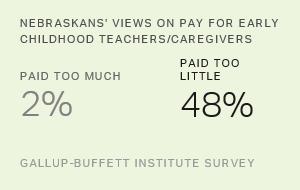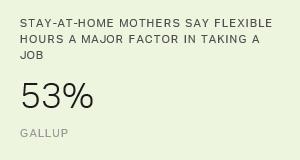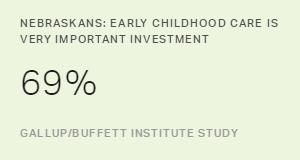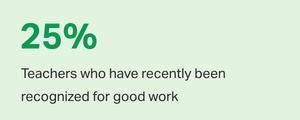Early childhood teachers and caregivers are entrusted with nurturing and developing the most valuable asset the nation has -- our future leaders, entrepreneurs, workers, teachers and parents. However, these professionals do not make wages commensurate with the weighty responsibility they shoulder. Their pay does not reflect the deep knowledge, skills and talent it takes to educate and develop children.
The median annual income for child care workers in the U.S. barely tops $20,000 -- less than half the median income of kindergarten teachers. In Nebraska, the median income of child care workers falls just short of the national median.
Nearly half (48%) of adults living in Nebraska say early childhood caregivers and teachers in the state are paid "too little," according to a Buffett Early Childhood Institute/Gallup survey. Fifteen percent of Nebraskans say these professionals earn "the right amount" and only 2% say they earn "too much."
Among parents with a child in a care center, more than half (55%) said they are paid too little. This underscores the high value families place on the care and education their children receive while they are away.
| Too much | Too little | About the right amount | Don't know | ||||||||||||||||||||||||||||||||||||||||||||||||||||||||||||||||||||||||||||||||||||||||||||||||
|---|---|---|---|---|---|---|---|---|---|---|---|---|---|---|---|---|---|---|---|---|---|---|---|---|---|---|---|---|---|---|---|---|---|---|---|---|---|---|---|---|---|---|---|---|---|---|---|---|---|---|---|---|---|---|---|---|---|---|---|---|---|---|---|---|---|---|---|---|---|---|---|---|---|---|---|---|---|---|---|---|---|---|---|---|---|---|---|---|---|---|---|---|---|---|---|---|---|---|---|
| % | % | % | % | ||||||||||||||||||||||||||||||||||||||||||||||||||||||||||||||||||||||||||||||||||||||||||||||||
| All Nebraska residents | 2 | 48 | 15 | 35 | |||||||||||||||||||||||||||||||||||||||||||||||||||||||||||||||||||||||||||||||||||||||||||||||
| Parents of a child in an early childhood education center | 1 | 55 | 12 | 32 | |||||||||||||||||||||||||||||||||||||||||||||||||||||||||||||||||||||||||||||||||||||||||||||||
| BUFFETT INSTITUTE/GALLUP SURVEY ON EARLY CHILDHOOD CARE AND EDUCATION | |||||||||||||||||||||||||||||||||||||||||||||||||||||||||||||||||||||||||||||||||||||||||||||||||||
Nebraskans also say early childhood teachers and caregivers need postsecondary education to care for and teach young children. Views on the education level needed vary based on the age of the child. Fewer Nebraskans see a need for postsecondary education for those who care for the youngest children. It is those who teach three- and four-year-olds whom the majority of Nebraskans think should have a two- or four-year degree.
| Less than a high school diploma or equivalent | High school diploma or equivalent | Some college, no degree | Two-year degree | Four-year degree | Advanced degree | ||||||||||||||||||||||||||||||||||||||||||||||||||||||||||||||||||||||||||||||||||||||||||||||
|---|---|---|---|---|---|---|---|---|---|---|---|---|---|---|---|---|---|---|---|---|---|---|---|---|---|---|---|---|---|---|---|---|---|---|---|---|---|---|---|---|---|---|---|---|---|---|---|---|---|---|---|---|---|---|---|---|---|---|---|---|---|---|---|---|---|---|---|---|---|---|---|---|---|---|---|---|---|---|---|---|---|---|---|---|---|---|---|---|---|---|---|---|---|---|---|---|---|---|---|
| % | % | % | % | % | % | ||||||||||||||||||||||||||||||||||||||||||||||||||||||||||||||||||||||||||||||||||||||||||||||
| Birth to 1 year | 8 | 42 | 18 | 20 | 10 | 3 | |||||||||||||||||||||||||||||||||||||||||||||||||||||||||||||||||||||||||||||||||||||||||||||
| 2-year-olds | 5 | 34 | 20 | 25 | 14 | 2 | |||||||||||||||||||||||||||||||||||||||||||||||||||||||||||||||||||||||||||||||||||||||||||||
| 3-year-olds | 4 | 24 | 19 | 30 | 21 | 2 | |||||||||||||||||||||||||||||||||||||||||||||||||||||||||||||||||||||||||||||||||||||||||||||
| 4-year-olds | 3 | 20 | 16 | 28 | 28 | 5 | |||||||||||||||||||||||||||||||||||||||||||||||||||||||||||||||||||||||||||||||||||||||||||||
| BUFFETT INSTITUTE/GALLUP SURVEY ON EARLY CHILDHOOD CARE AND EDUCATION | |||||||||||||||||||||||||||||||||||||||||||||||||||||||||||||||||||||||||||||||||||||||||||||||||||
While many Nebraskans say early care and education professionals earn too little and need postsecondary education, they also acknowledge that cost is the biggest challenge that families face in obtaining quality care for their young children. More Nebraskans say cost is the biggest challenge in obtaining care (35%) -- outpacing each of four other challenges families face. This perception reflects the high costs of early childhood education and care and the impact for low-income families. The average cost of full-time care for young children is approaching $10,000 per year in the U.S. and now exceeds the average cost of in-state college tuition.
Low pay for early childhood caregivers and teachers coupled with the high cost of care presents a challenge for leaders looking to boost the quantity and quality of early childhood care and education options for families that need it. The Buffett Early Childhood Institute is one organization working to meet the challenge, aiming to help make Nebraska the best state for babies.
Innovative approaches are needed to grow, train and compensate a quality early childhood care and education workforce that meets the needs of families. Business leaders can be part of the solution. As some organizations abandon on-site day care, others are finding ways to engage their employees by ensuring quality on-site care and education are available and self-sustaining.
Findings from a recent Gallup report, Women in America: Work and Life Well-Lived, suggest initiatives like this that support families in obtaining quality care for their children could be beneficial. This report finds that kids are a company's greatest competition. Many women want to work and have high career aspirations, but the majority of mothers employed outside the home (54%) say they would prefer to stay home and take care of the house and family.
Building an engaged, productive, gender-diverse workforce includes addressing the early care and education needs of families, but not enough organizations are embracing the challenge. For example, fewer than one in 10 companies have on-site child care.
Working parents need the peace of mind that comes with having caring teachers who support their child's growth and development while they are at work. My youngest child was two when I started working at Gallup nearly nine years ago. I was excited to begin my new role, but like many parents, struggled with putting my two youngest children in the care of others. It was heartening to have access to an on-site early childhood care and education center -- a joy-filled place with talented teachers who are well-trained. I was free to work while my children received high-quality care nearby. All families need the assurance that their children are receiving excellent care and education while they are at work.
Attracting and retaining talented early childhood care and education professionals who provide critical support for children and families requires creative solutions that ensure they are trained well and compensated fairly. It's time to invest more in the teachers and caregivers who develop our nation's most precious treasure -- our children.
Get results from the Buffett Early Childhood Institute/Gallup Survey.




